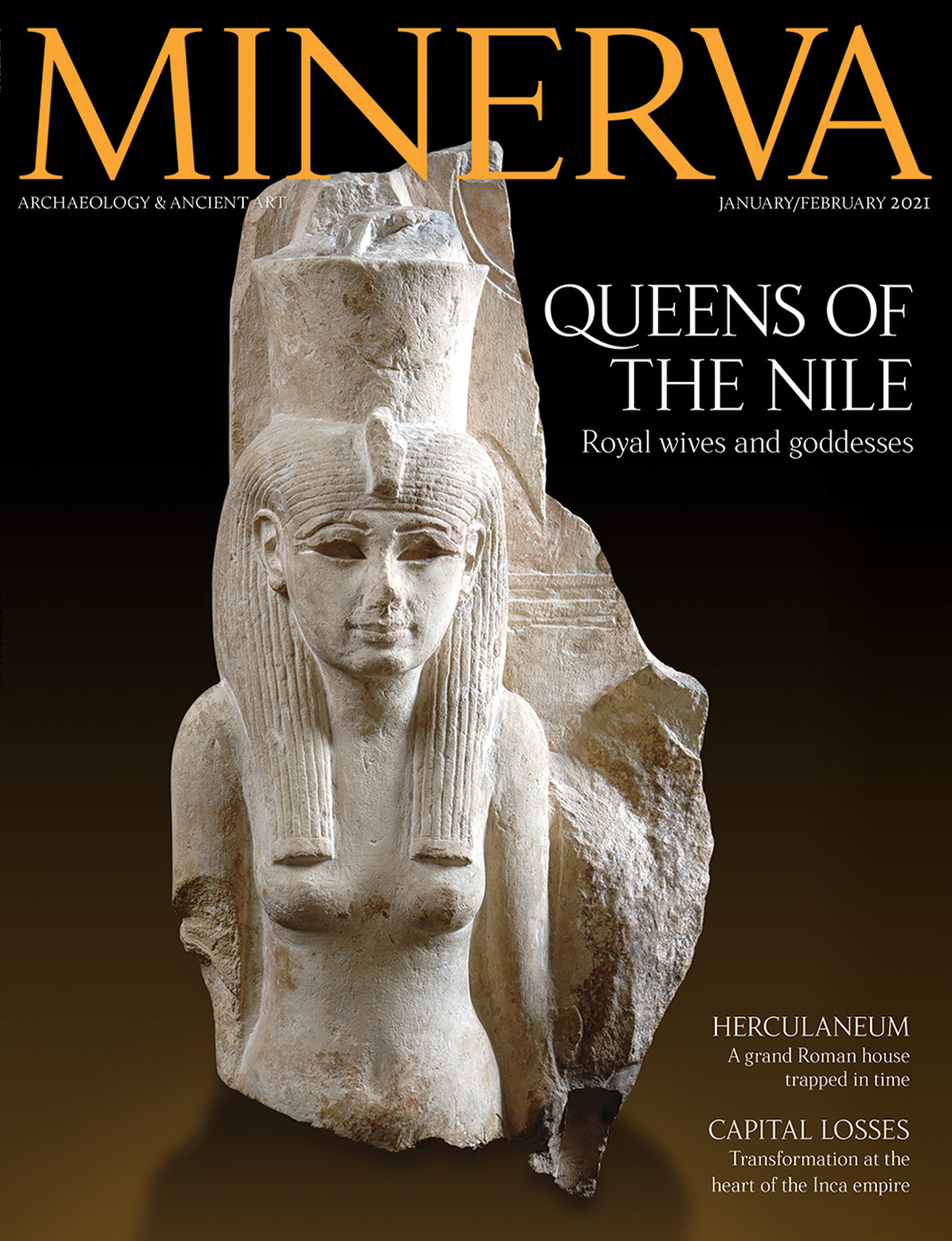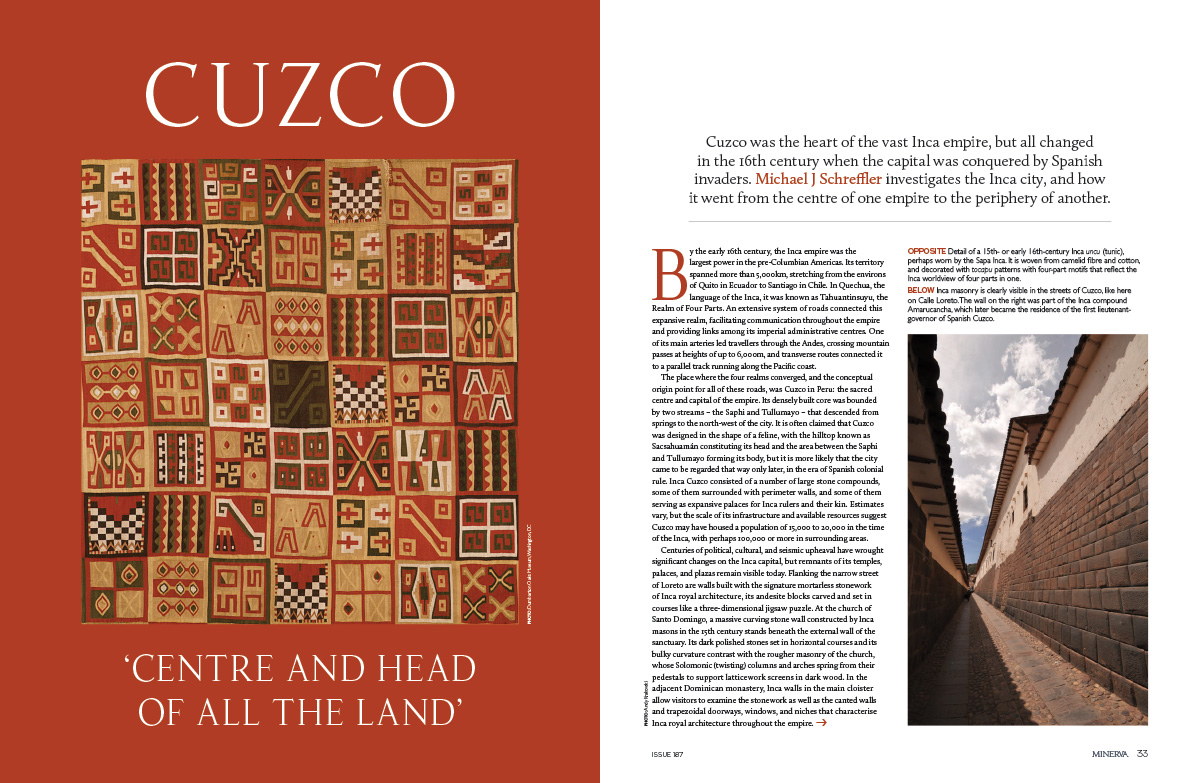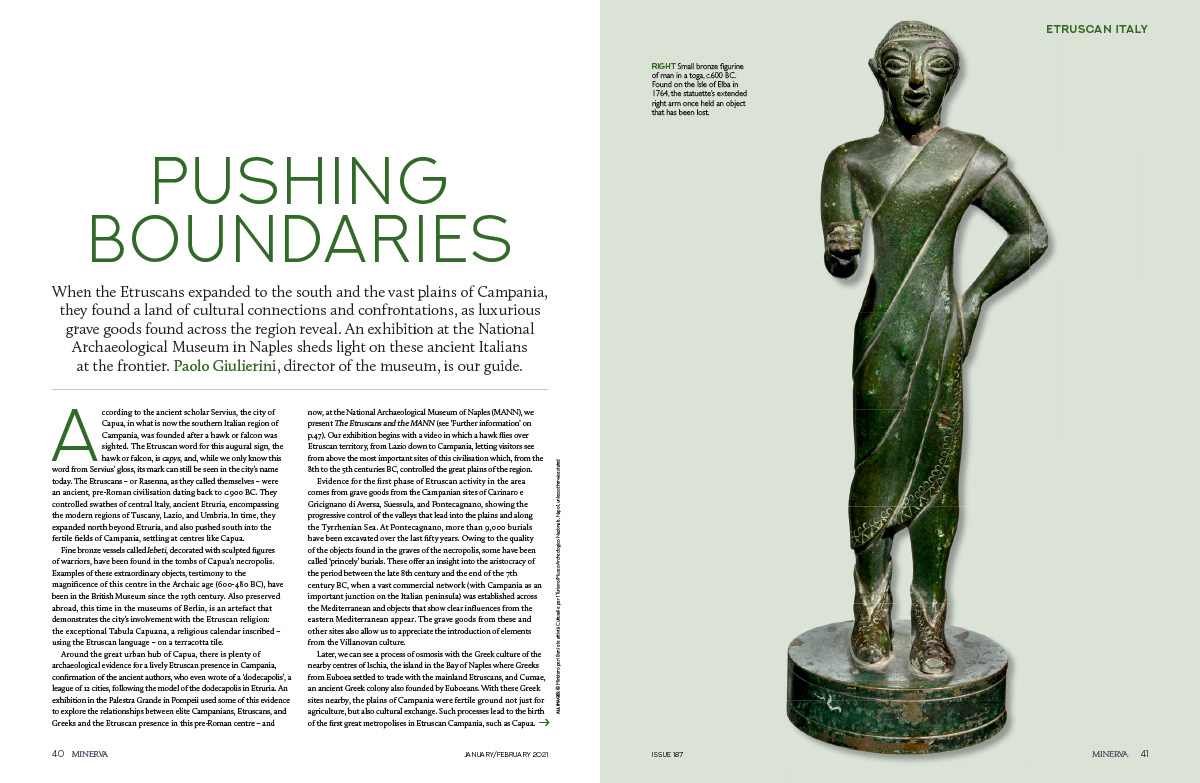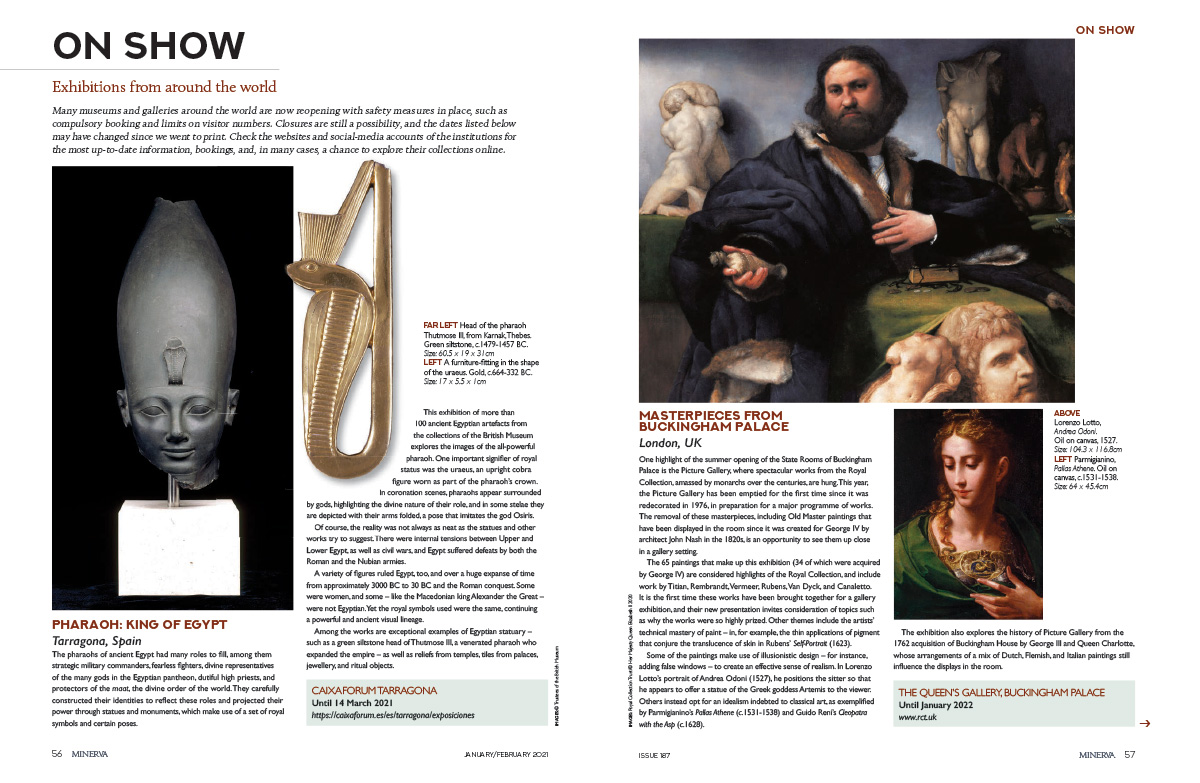At the start of the 20th century, a team of archaeologists from Turin made an important discovery in Egypt: the tomb of queen Nefertari. Nefertari was renowned, and her prominence hinted by the many inscriptions that bear her name, but the scale of the tomb the archaeologists found impressed nonetheless.
Finds from Ernesto Schiaparelli’s excavations in the Valley of the Queens and the artisan village of Deir el-Medina are now on view in a new exhibition at the Kimbell Art Museum. For our cover feature, we take a look at the archaeology of this remarkable royal woman and the people who built her tomb.
The year 2020 has seen museums, galleries, and sites in many parts of world close and reopen. When the House of the Bicentenary in Herculaneum reopened its doors in 2019, it had been off-limits for some 30 years. The Roman townhouse, one of the site’s grandest, was excavated and opened up by another Italian archaeologist, Amedeo Maiuri, in 1938, before closing in 1983 due to structural issues. The lack of regular maintenance that came with the closure didn’t help matters, but recent conservation work means visitors can enjoy the splendours of this spectacular house once more, as Francesco Sirano and Leslie Rainer write.
In Peru, Inca royalty ruled their vast empire from its sacred centre, Cuzco. Cuzco was the centre of the world, a world divided into four parts. This worldview, as Michael J Schreffler explains, is reflected in the rich material culture left behind across the Inca empire. When the Spanish conquered this city, though, it lost its position as the centre of an almighty empire, but traces of the impressive Inca structures still stand in modern Cuzco today.
A four-part system was also important to the Etruscans, inhabitants of ancient Italy. They divided the sky into four (and then 16) regions to help determine the will of the gods through divination. An exhibition at the National Archaeological Museum of Naples explores southern Italy’s connections to the Etruscans. Paolo Giulierini, the museum’s director, takes us into these ancient Etruscan borderlands, fertile fields fought over by Greeks and Etruscans, but a land of coexistence and cultural exchange as much as conflict.
The Etruscans were by no means the only people to look for guidance from higher powers. As David Stuttard writes, the ancient Greeks sought out oracles to commune with the sage spirits of the deceased. In our final feature, we examine ancient attitudes towards and beliefs about the dead, revealed through myth and material culture.







